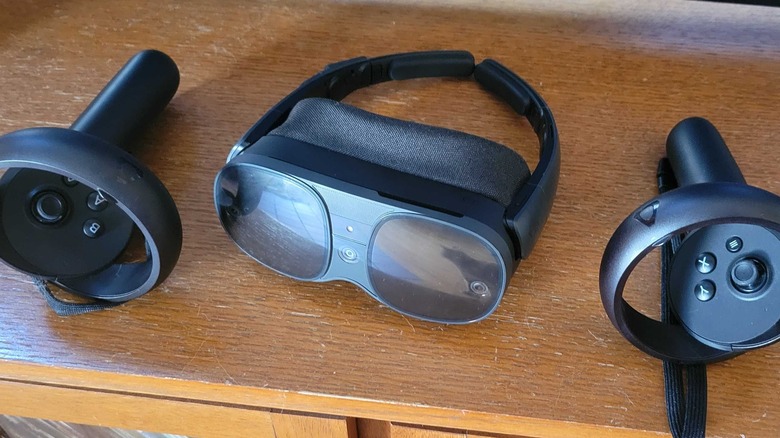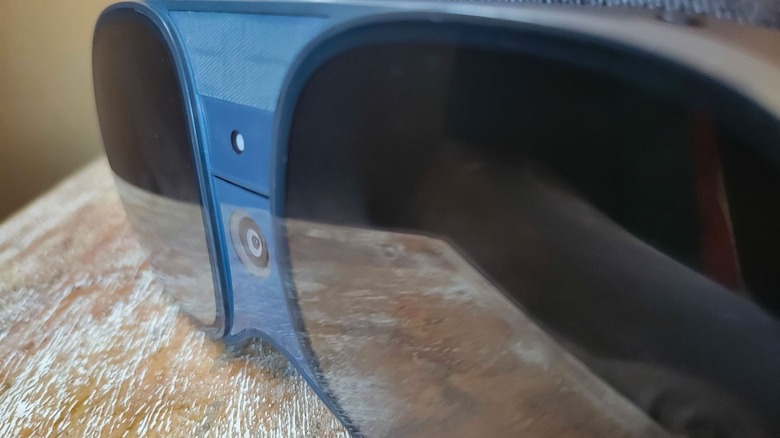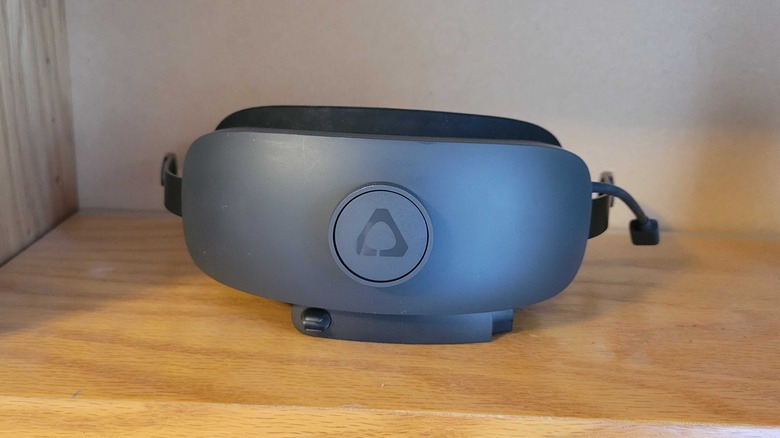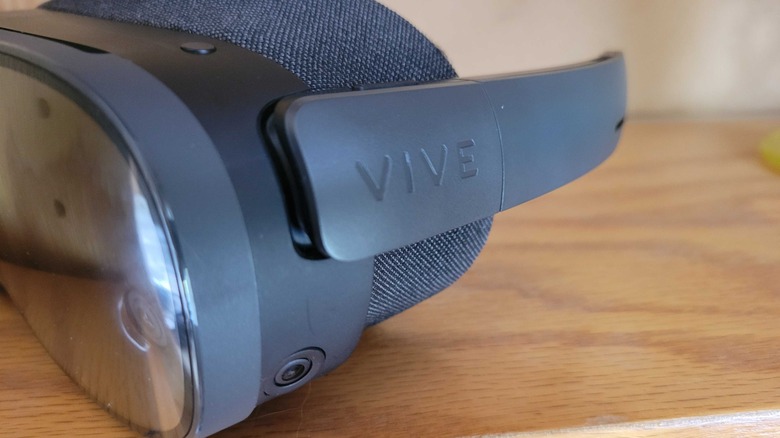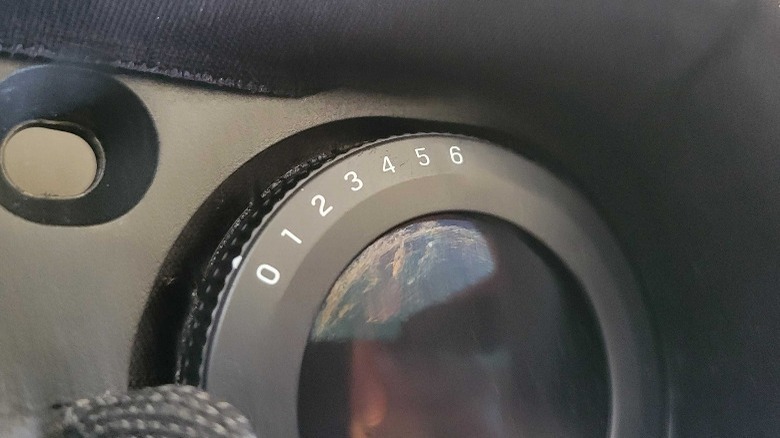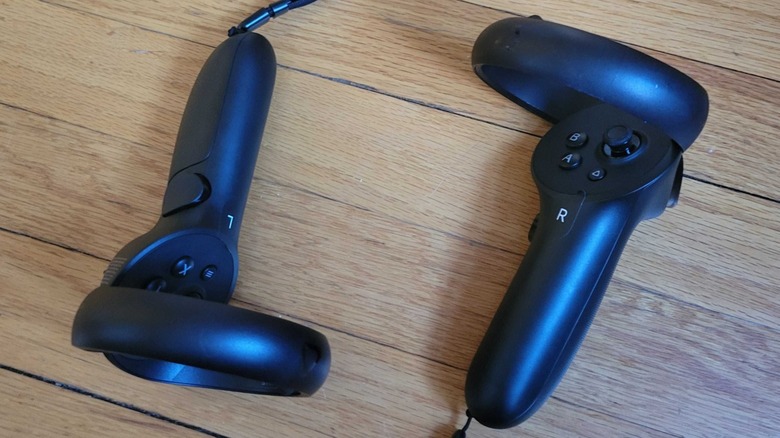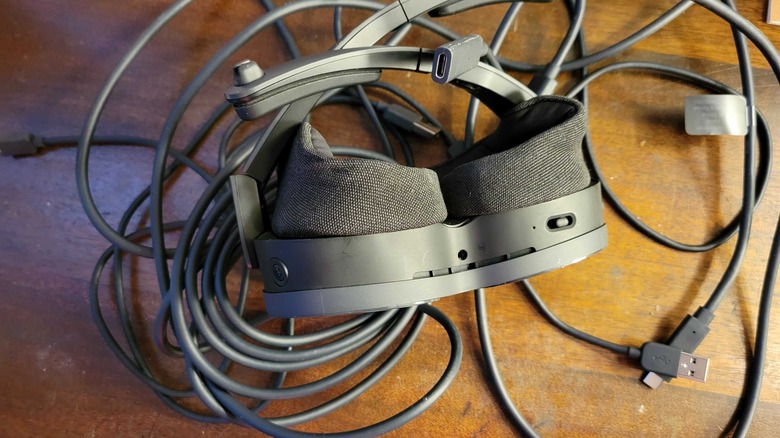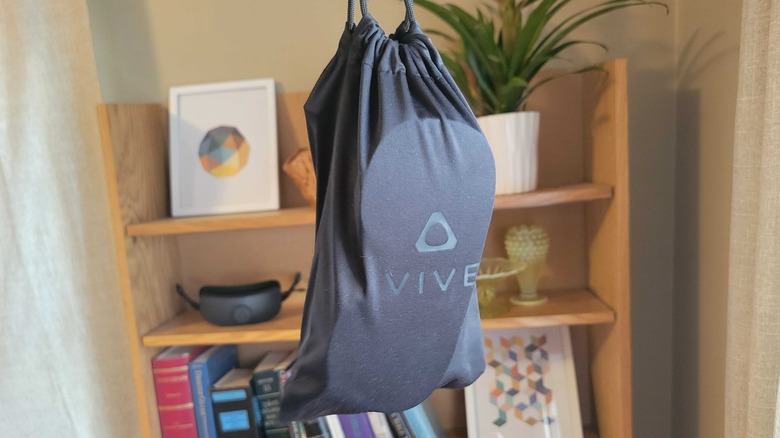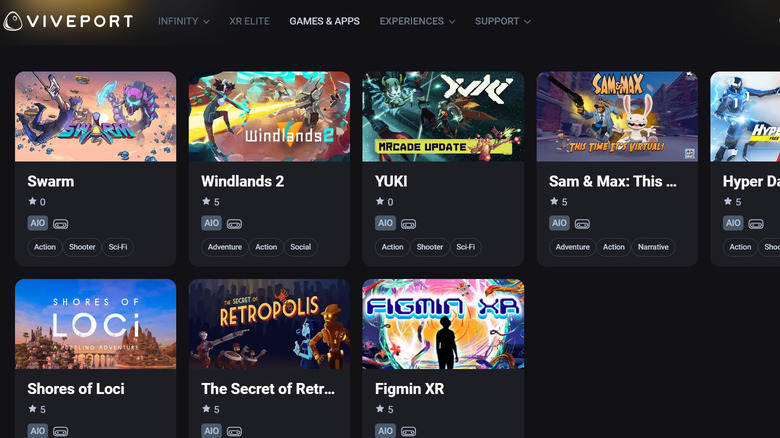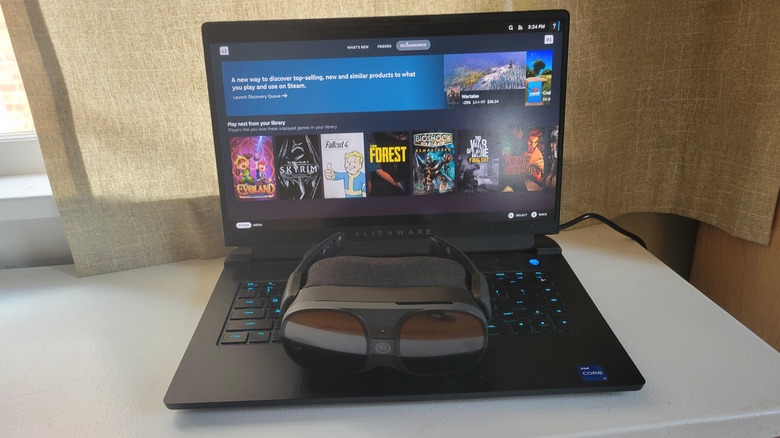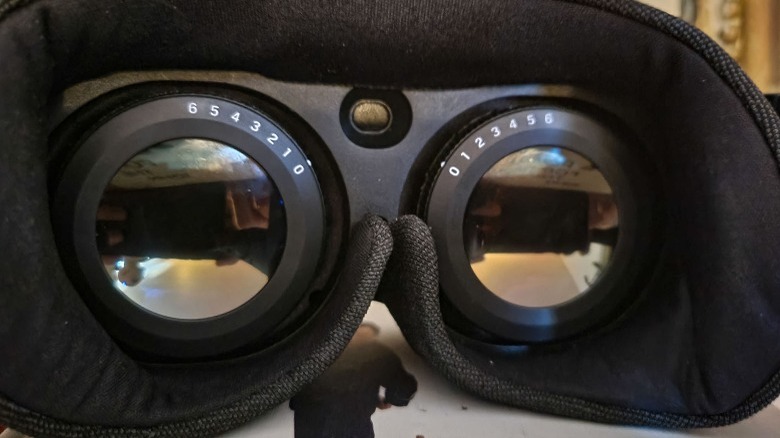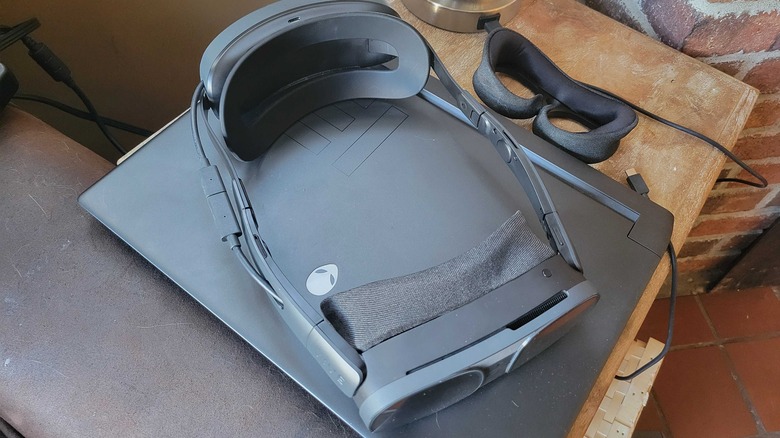HTC Vive XR Elite Review: Quest Pro Gets A High End VR Headset Rival
- Light and comfortable
- Top-notch visuals
- WiFi-6e capable
- Depth sensor
- Controllers feel comparatively cheap
- Standalone capability is currently limited
- Charging system is a headache
HTC is the latest company to launch a standalone VR headset. The Vive XR Elite is billed as the company's "most versatile headset ever." It's light, stylish, and comes with a range of high-end features. It's also technically HTC's second wireless standalone headset and has a lot in common with the Vive Flow in terms of appearance, weight, and hardware design.
At launch, the HTC Vive XR Elite is going head-to-head with the Meta Quest Pro — and they have a lot more in common than just their price tags. Both devices can be used as standalone headsets, both have cut weight when compared to previous models, and both have features like color passthrough. In terms of wearability, both headsets come with a "halo strap" and have moved their battery to the back of the headset.
As you may expect, comparisons between the XR Elite and Quest Pro are going to crop up pretty often in this review. The hype surrounding both, their price tags, and the potential applications, means it makes sense. You'll also be familiar with a lot of the Quest Pro's features if you've ever used a Quest 2, so hopefully, the comparisons will help give you a better picture of what the XR Elite is actually like.
Surprisingly light and comfortable
The Vive XR Elite is one of the lightest comparatively-powerful VR headsets on the market right now. While VR enthusiasts all know the pains a heavy headset brings, and all acknowledge lightness is a good thing, you won't understand how game-changing a truly light headset is until you wear one.
HTC's latest effort weighs just 1.3 pounds with the battery attached and under ten ounces without it. The battery is also situated at the back, so the extra weight counterbalances the part of the headset touching your face, instead of adding to it. If you're playing PCVR and using a wired connection, you can shed the battery entirely and use the headset in "glasses mode," though it isn't as securely attached this way and you should only use this option for seated games.
Looking beyond the numbers, this is like wearing a pair of ski goggles. I could genuinely wear this headset all day without any discomfort. The lightness is also useful if you're playing games that require sudden movements. Oculus headsets will swing around your face if you turn your head too much, and one of the lenses is likely to smash you in the side of the nose. I didn't encounter this problem with the XR Elite. I can't emphasize how major this is. HTC has set the standard here, and other headsets need to be striving for this level of comfort.
Internally, it's not quite cutting edge
Under the hood, the Vive XR Elite isn't pushing any boundaries. The Vive XR elite uses the Qualcomm Snapdragon XR2 chip, which is the same one you'll find in the Quest 2 and Pico Neo 3 Pro headsets. The Quest Pro has a Qualcomm Snapdragon XR2+ chip, which dissipates heat a little better and can take roughly 50% more power as a result.
The XR2 chip in the Vive XR Elite doesn't have that much of an impact on PC VR gaming, but it is at the core of the headset's standalone mode. In terms of raw power, it should be about level with the Meta Quest 2. I can understand HTC's choice of chip as the industry is still heavily focused on producing content for the Quest 2, which is the leading VR headset by a long way. Paying extra for an XR2+ chip would increase the price of the headset for the sake of giving customers some extra oomph that they may not ever need.
However, it is worth noting that Qualcomm will be releasing a new generation of chips soon. We could see a next-gen XR2 in the upcoming Meta Quest 3 headset, and if that headset takes off as much as the Quest 2 did the XR Elite may seem underpowered in a couple of years' time. Given the price tag, this is a device you would expect a lot of long-term use out of. So maybe the XR2+ would have been a better option after all. At the very least, HTC could have claimed they put the best chip readily available at the time into the Vive XR Elite.
Other specs are reasonably solid
The headset is also packing 12 GB RAM and 128GB of internal storage. The RAM puts it on par with its close rival the Quest 2 and should come in handy during multitasking applications if HTC implements the ability to perform those. It also really helps out from a gaming standpoint. In terms of internal storage, it's far from the best in class but 128 GB is plenty for most people. The only way that 128 GB starts looking a bit light is if you're installing absolutely massive apps — and "Medal of Honor: Above and Beyond" isn't available for this headset as things stand.
Battery life clocks in at around two hours, though this will depend on what features are enabled and what you're using the headset for. The display itself offers 4K resolution, a 90hz refresh rate, and a 110-degree FOV. While there is a depth sensor, this headset lacks eye and facial tracking, though HTC has said it will release a "module" which brings these features to the XR Elite later this year.
It makes everything look good for almost everyone
The 4K display this headset contains is pretty solid. Once you're immersed in a game, the "screen door effect" all but disappears. You won't notice it if you aren't specifically looking for the tiny imperfections between the LCD's pixels. Colors seem vibrant, and the refresh rate should help with things like VR sickness if you're a newer user — though ideally, companies should be trying to push towards 120hz as standard — especially where PCVR is involved.
One of the best things about this headset is the adjustable diopter. I took this to a family gathering during the testing period and encountered a few people with less-than-perfect eyesight. After asking them to "rank their eyesight out of six" I managed to get the setting close enough to allow them to use the headset fairly quickly. This is a far better system than just making the headset bigger so glasses will fit in there. It is worth noting that there is a downside to diopters. Using this headset on the wrong setting can be like wearing someone else's glasses, so there is a chance you can damage your eyes with this. If someone else has been using the headset, make sure you double-check the settings before popping it on.
IPD adjustments are also fairly straightforward and don't require a mirror and a ruler. It has a little slider on the bottom right, similar to the one the original Quest came with. Adjust the slider until the lines on the screen are sharp and you're good to go. The pancake lenses have a large "sweet spot" so you should get a clear picture, even if your IPD isn't spot on.
The controllers
I might have been spoiled by the Quest Pro's controllers, but the Vive XR Elite's controllers really didn't impress me. It isn't all down to the infrared tracking either, the controllers tracked just fine and you don't really put them out of sight of the headset that much anyway. It's more of an issue with a few key points of usability. Sometimes connecting them was a bit of a pain when booting the headset up. You need to hold a button to turn each controller on startup, they don't automatically come to life. Then you sometimes need to hold a very awkward button combination to sync them with the headset.
Then there's the feel of them. They are very light, which HTC may have been going for, but coupled with the texture of the plastic, they feel very, very, cheap. They also feel pretty fragile. It felt prudent to be a bit more careful than usual with this headset to avoid catastrophic damage courtesy of a right cross into a wall or doorframe. Even the Quest 1's controllers felt like they could (and did) shrug that kind of thing off.
On the plus side, the controllers are pretty long. This is useful in games like "Blade and Sorcery" where a trigger pull will make your hand slide down your weapon. HTC's controller is long enough to adjust your grip further down and avoid this problem. Two-handed grips are more comfortable too, which is great for VR golf, baseball, and cricket games.
Charging with USB-C
Vive XR Elite is charged via a USB-C Cable, and its controllers are charged in the same way. That's three wires. It also means there will be times your headset and controllers aren't charged, and your play sessions will be delayed as a result. This was compounded by the controllers, which mysteriously lost charge while not in active use. The issue isn't clear at this time, but maybe depressing one of the grip buttons accidentally will "wake" the controller and kill the battery off.
Meanwhile, the Meta Quest Pro comes with a charging stand where you can set the headset and controllers while they're not in use. While this is probably terrible for the devices' batteries, it is incredibly convenient. The headset and controllers are always ready to go when needed.
While I'm not saying HTC should copy Meta's homework here, a more user-friendly charging system would be a huge quality-of-life improvement for this headset. Even releasing a controller that takes regular AA batteries would be a huge improvement over this system. At least then you could be good to go after a quick changeover.
Portability and mobility
I've traveled with a Quest Pro and it isn't a pleasant experience. You have to put it in a protective case, then that takes up a significant amount of luggage space. The Vive on the other hand is almost pocket-sized under certain circumstances. It even comes with a little pouch you can use to store the "glasses" part of the headset separately. You'll only need that pouch and a cable if you want to use this device seated with a PC. You could also pack the pouch, cable, and a wall plug for power if you want to play standalone. Hand tracking eliminates the need for controllers with certain apps, and your power is sorted thanks to the cable. You can even run the headset off a compact power bank.
For a better experience, you can pack the battery pack and controllers. Neither of these is as fragile as the bit with the lenses — so you might not have to buy a specialist case. Tossing the battery pack into hold luggage wouldn't be an issue. The controllers may need a little taking care of, but you're still traveling with this far easier than you would with any other headset on the market at the moment.
As things stand, it's pretty limited on its own
Even basic standalone functionality is great on any headset, especially when traveling or trying to demonstrate how good VR is to other people. A headset that can just be turned on and placed on someone's head is better than having to deal with an additional laptop, router, or wire, and all of the things that can potentially go wrong with PCVR.
HTC hasn't done a terrible job. The interface is nice and functional. It's also nice to wander around your virtual home and launch apps by activating objects in it. For example, selecting the Mona Lisa hanging on your wall will take you to a VR rendition of France's Louvre art gallery. There's also a set of easy-to-navigate menus if you prefer that.
The issue lies with the apps available. The "VIVEPORT Store" has next to nothing of note in it. This will improve, but for now, you're stuck playing "Warplanes," some strange VR air guitar game, or a set of "VR Experiences" that were best left back in the days of Google Cardboard. This headset needs a few big titles, and hopefully isn't going to be held back by Meta's aggressive acquisitions of smaller VR developers over the last few years.
WiFi 6e is a game-changer
It was a shock when apps like Virtual Desktop combined with a Meta Quest brought wireless PCVR to the masses. It wasn't perfect, but it was a huge leap forward. The XR Elite connects to your PC through a desktop app and it's pretty intuitive to use. You also don't have to navigate through your desktop, or mess around with Steam VR — you can actually launch games that are installed on your PC directly through the headset's menu. Launching non-Steam VR games is a tad trickier though.
The fact this headset is WIFi 6e enabled right out of the box is significant. The Quest Pro has the hardware to handle WiFi 6e but at the time of writing, the feature hasn't been enabled on the headset (or this review unit headset anyway). The difference between wireless VR on a dedicated WiFi 5 channel and across WiFi 6e is night and day. Everything is absolutely seamless, effectively on par with a wired connection.
In terms of faults, there's really nothing a future update can't fix. While the SteamVR compatibility is great, I'd like to see HTC make playing non-Steam VR games a touch easier. There's also an issue when connecting to WiFi networks. If there's an issue with the network, or you type the password wrong, it will just try to connect, fail, and list the network as "Saved." A popup telling you the connection failed and suggesting what the issue is would be very helpful.
Features now and coming soon
The full-color passthrough on the Vive XR Elite seems a bit sharper than the Quest Pro. On the downside, the perspective seems a little off sometimes. You can't tell your hand is close to your face if you're just going off the visuals. Instead, it just seems absurdly huge. But you will probably get over that when you see the weird level of skin detail the XR Elite's cameras pick up on.
This passthrough camera is going to get even more useful when the headset's depth sensor is enabled. A depth sensor basically lets your headset work out where objects in the room are, and pick up the details of the room itself. Theoretically, this will make setting up a headset's safety boundary a lot simpler — but the benefits go beyond that.
Depth sensors are key to the whole mixed reality side of things. Instead of awkwardly trying to set things up with a controller, a virtual game board will instead automatically be placed perfectly on a desk. Virtual art can be slapped on your walls, and a big, fake, TV can be mounted on the other side of the room. New mixed-reality games also become possible. Think "whack-a-mole," or a VR version of "Portal."
Perfect for PCVR, but standalone mode needs work
So should you buy this headset? If you have the budget for it, and you're into PCVR, then I'm happy to say this is the best option on the market at the moment. The lightness, comfort, connectivity, and display make it a superb choice. If I didn't already own more expensive VR headsets than I can realistically afford, I would honestly be buying one of these the second the review unit goes back in the mail. If it was released before or at the same time as I purchased my Quest Pro, then HTC's device would be the one sitting on my desk right now.
As far as standalone VR goes, you're best off giving it some time. It would be unfair to expect HTC to produce a standalone experience on par with Meta — which has had a pretty huge headstart in that department. There's nothing glaringly wrong with the user interface, and the hardware is there — but the store is very limited. In six months to a year, that could be a totally different story. But for now, hang onto your cash if you haven't got a VR-capable PC.
You can find the HTC Vive XR Elite (with controllers) available on Amazon for $1,099 right now.
